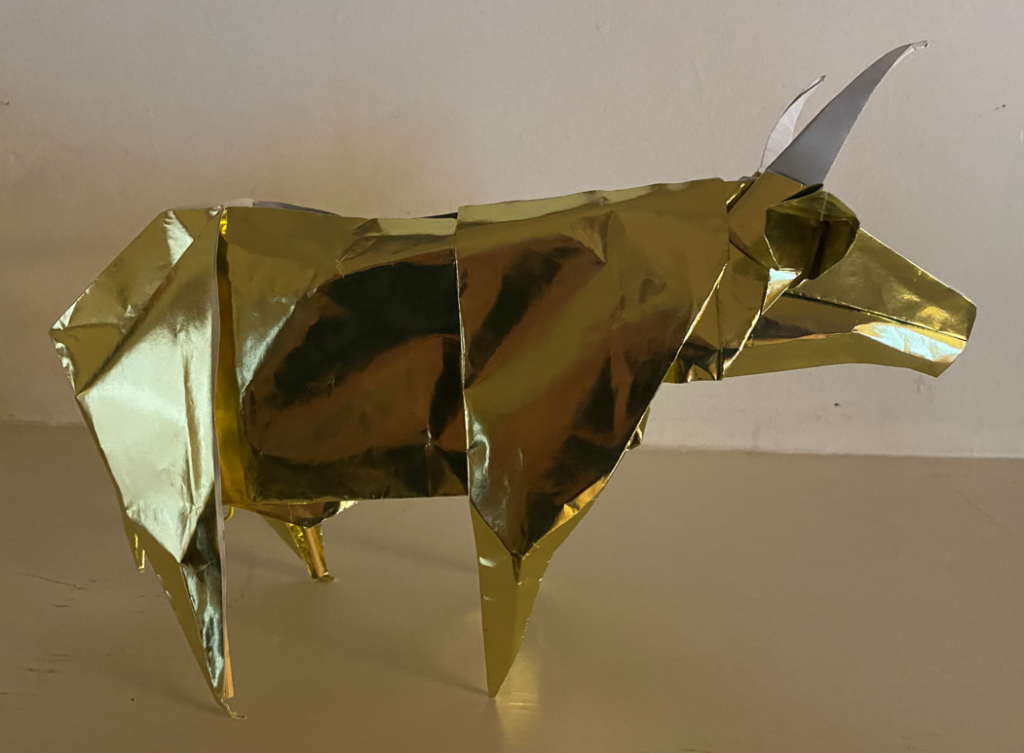Ki Tisa
By Joel Stern – February 19, 2022
The D’rash is based on this 3-minute video, so please click and watch it before reading.
Why did I tell this story using origami? What was different about your hearing the story while I was dramatizing it by folding a square of paper, rather than just hearing the story alone?
Well, for one thing, folding the paper stimulated your curiosity. You wanted to see where I was going. You wanted to see how my words would be reflected in the folding action. You were engaged with what was happening.
Also, it was a multisensory experience for you. You were using your eyes as well as your ears. Research has shown that multisensory learning can be more effective for many people than unisensory learning, because it keeps them more engaged.
Here’s another reason you paid attention: A story is an abstraction of an experience. When you only hear my words, the experience remains abstract, intangible, conceptual. When I augment the story with a physical act — folding paper, the abstract becomes tangible, more real.
Do you see any parallels with our story of the Golden Calf in this week’s Parasha? The people wanted, needed, in fact, a physical manifestation of God. Moses was their link to God. He was for them, in many ways, the physical embodiment of the Divine. With Moses gone, the people’s link to God was even more tenuous, and during a prolonged absence, that link had broken. They could no longer accept divinity in the abstract. They needed a physical presence. Hence, the Golden Calf.
But here’s the great irony of the story. God understands this need of the people for a physical presence. Just before sending Moses back down the mountain with the first set of tablets, He tells him that he has endowed Bezalel and Oholiav with the skills necessary to make the Ohel Mo-ed, the Tent of Meeting; the Aron la-Edut, the Ark of the Pact, along with its cover; plus all the furnishings of the Tent; and the priestly vestments. Bezalel and Oholiav were even tasked with pressing the oil to anoint the priests, and preparing the aromatic incense!
God understood the people’s need for a beautiful prayer space: an attractive ark, stately looking priests, and a religious atmosphere. He wanted to engage all their senses, recognizing that these things can enhance sacred experience, even faith.
If only the people had been more patient! Instead, they built a Golden Calf. And as punishment, Moses sent the Levites out to slaughter the 3,000 sinners among the people.
Some commentators understood that the severity of the punishment was due to the fact that the people refused a direct relationship with God, but preferred an intermediary — Moses, or, in his absence, an idol. God was offended. It’s kind of like a wife no longer wanting to communicate directly with her husband, but through her lawyer.
But, after all, as creatures of the flesh, it’s understandable that the people were apprehensive about such a intimidating relationship. Say the wrong word and ZAP! Weren’t they, as physical beings, simply doing what came naturally?
If that’s all we are as humans—physical beings—then the people’s actions were totally natural, and the punishment was completely unjustified.
But the Torah teaches us, through this story, that we’re not just physical creatures. We also have a spiritual side.
Immediately after dictating the physical requirements of the Ohel and the Aron, God charges Moses: Ach shabtotai tishmoru… “Nevertheless, you must keep My Sabbaths.” And then… V’shamru v’nei Yisrael et haShabbat l’dorotam b’rit olam… “The Israelite people shall keep the Sabbath, observing the Sabbath throughout the ages as a covenant for all time.”
God is saying, yes, as physical beings you need a distinctively beautiful space in which to encounter the sacred. That’s provided by the Ohel and the Aron. But you also need a sacred time during which the possibilities for a spiritual experience are enhanced. We can enter that sacred time by observing the Sabbath.
As humans, we need both sacred time and space, the abstract and the concrete, the spiritual and the physical, the holy words and the two tablets on which they were written, the story and the folded paper.
This is who we are, the Torah teaches — creatures of spirit and flesh. And by nurturing both sides of our nature, we can be partners with God in B’rit Olam — a covenant spanning all of time… and all of space.
I sense that the paper Tablets may not have quite satisfied your need for a physical token of this D’var Torah. So in that spirit, I offer this origami Golden Calf. Remember, it’s not to be worshipped!

Shabbat Shalom!
